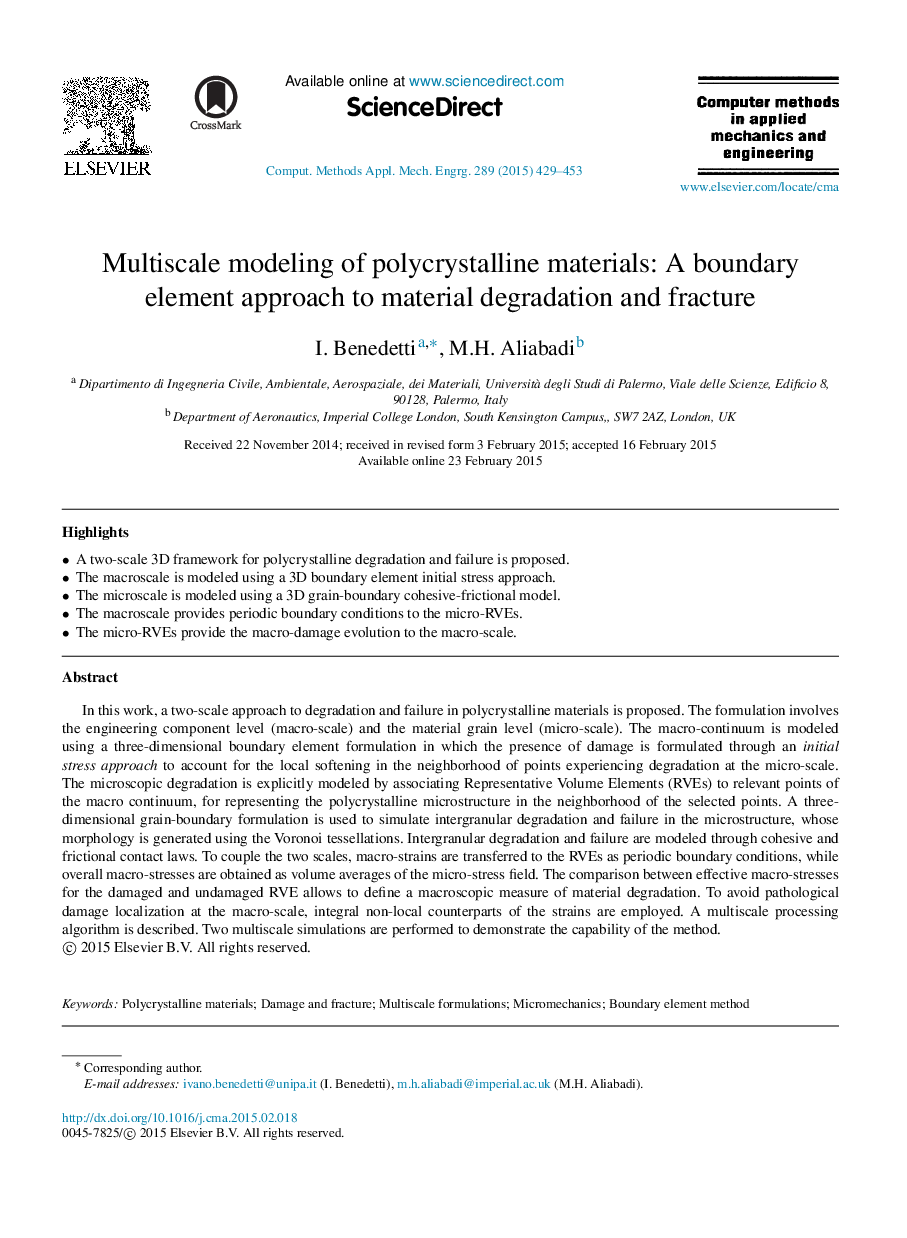| Article ID | Journal | Published Year | Pages | File Type |
|---|---|---|---|---|
| 497753 | Computer Methods in Applied Mechanics and Engineering | 2015 | 25 Pages |
•A two-scale 3D framework for polycrystalline degradation and failure is proposed.•The macroscale is modeled using a 3D boundary element initial stress approach.•The microscale is modeled using a 3D grain-boundary cohesive-frictional model.•The macroscale provides periodic boundary conditions to the micro-RVEs.•The micro-RVEs provide the macro-damage evolution to the macro-scale.
In this work, a two-scale approach to degradation and failure in polycrystalline materials is proposed. The formulation involves the engineering component level (macro-scale) and the material grain level (micro-scale). The macro-continuum is modeled using a three-dimensional boundary element formulation in which the presence of damage is formulated through an initial stress approach to account for the local softening in the neighborhood of points experiencing degradation at the micro-scale. The microscopic degradation is explicitly modeled by associating Representative Volume Elements (RVEs) to relevant points of the macro continuum, for representing the polycrystalline microstructure in the neighborhood of the selected points. A three-dimensional grain-boundary formulation is used to simulate intergranular degradation and failure in the microstructure, whose morphology is generated using the Voronoi tessellations. Intergranular degradation and failure are modeled through cohesive and frictional contact laws. To couple the two scales, macro-strains are transferred to the RVEs as periodic boundary conditions, while overall macro-stresses are obtained as volume averages of the micro-stress field. The comparison between effective macro-stresses for the damaged and undamaged RVE allows to define a macroscopic measure of material degradation. To avoid pathological damage localization at the macro-scale, integral non-local counterparts of the strains are employed. A multiscale processing algorithm is described. Two multiscale simulations are performed to demonstrate the capability of the method.
